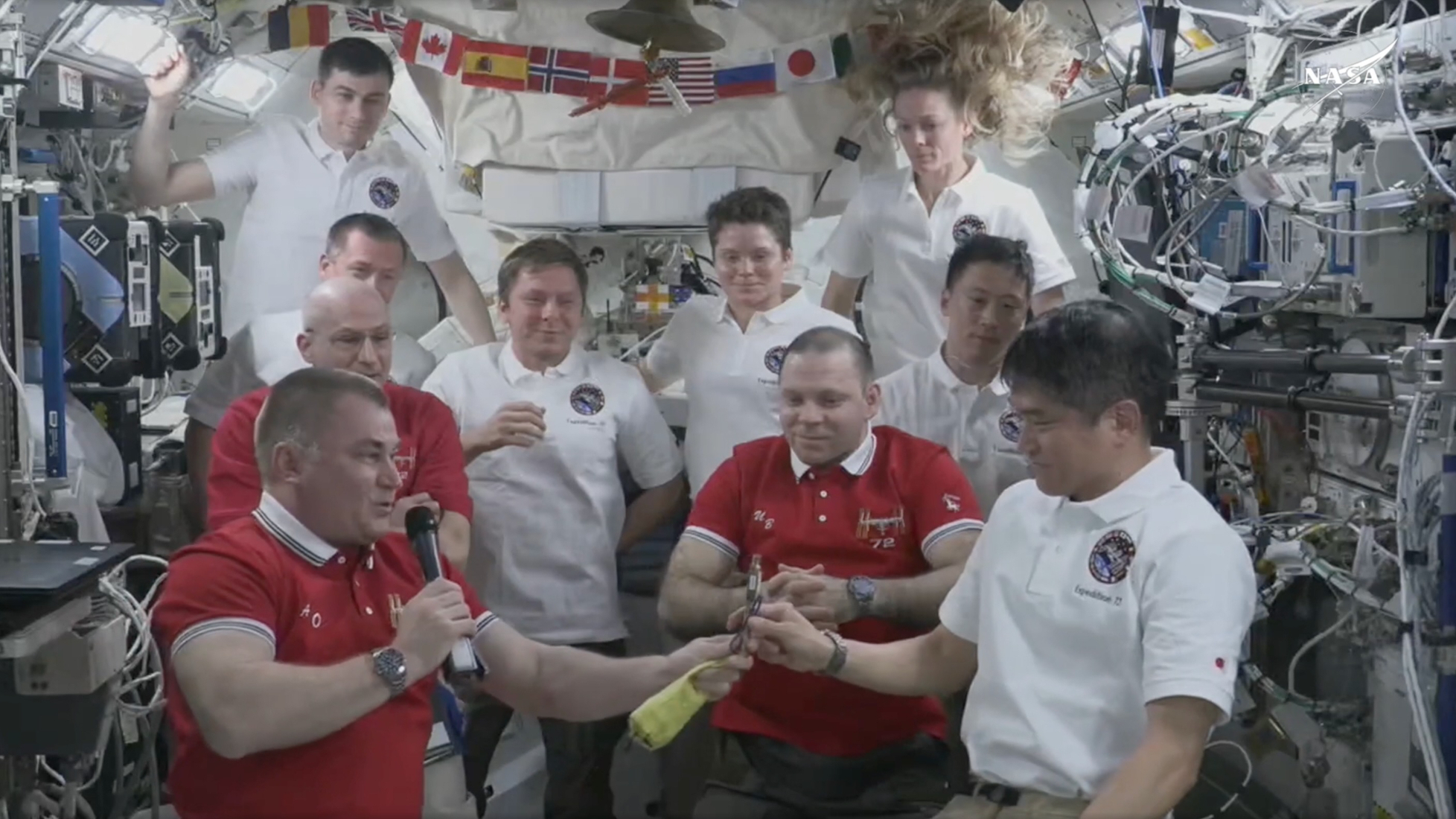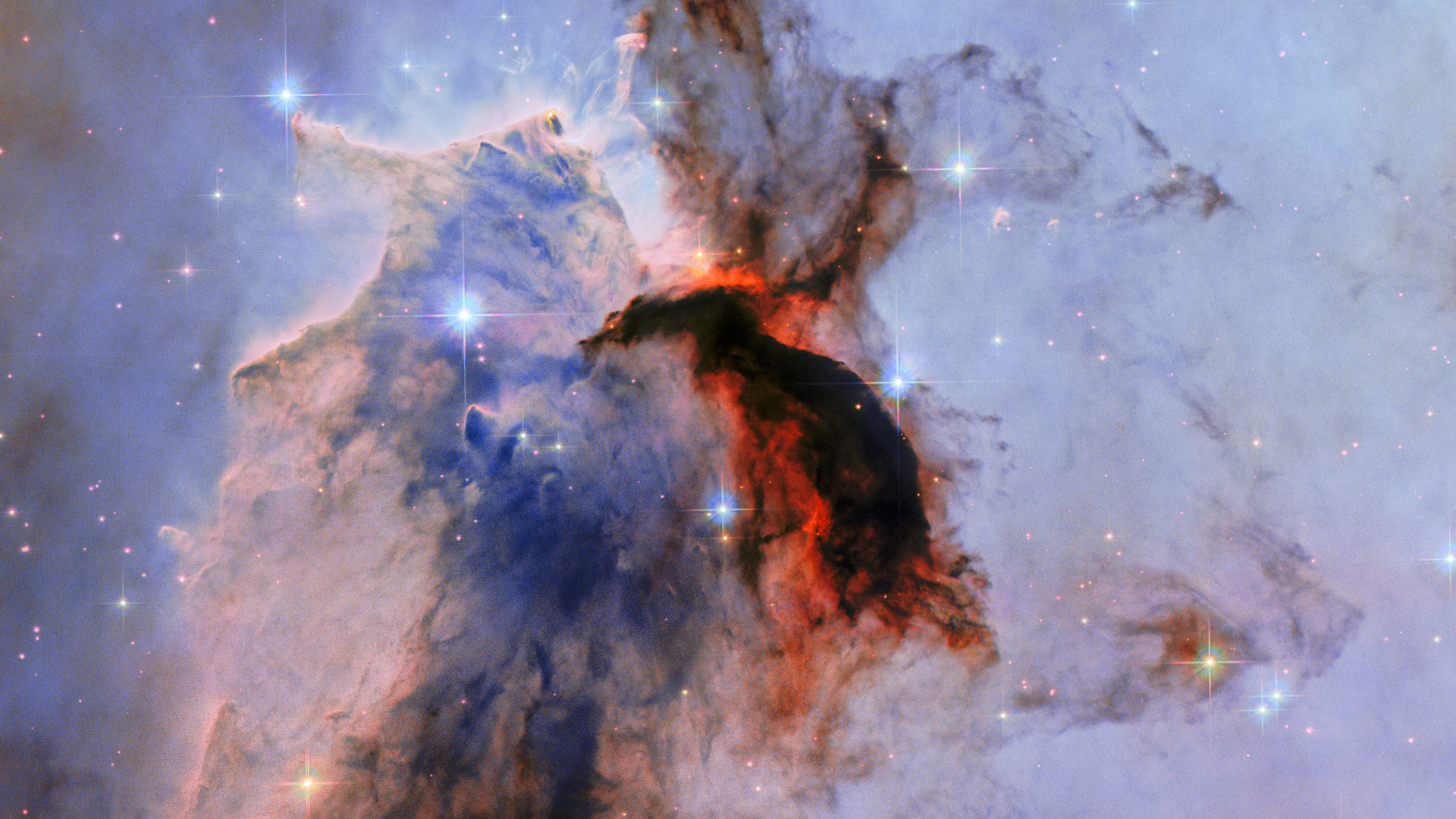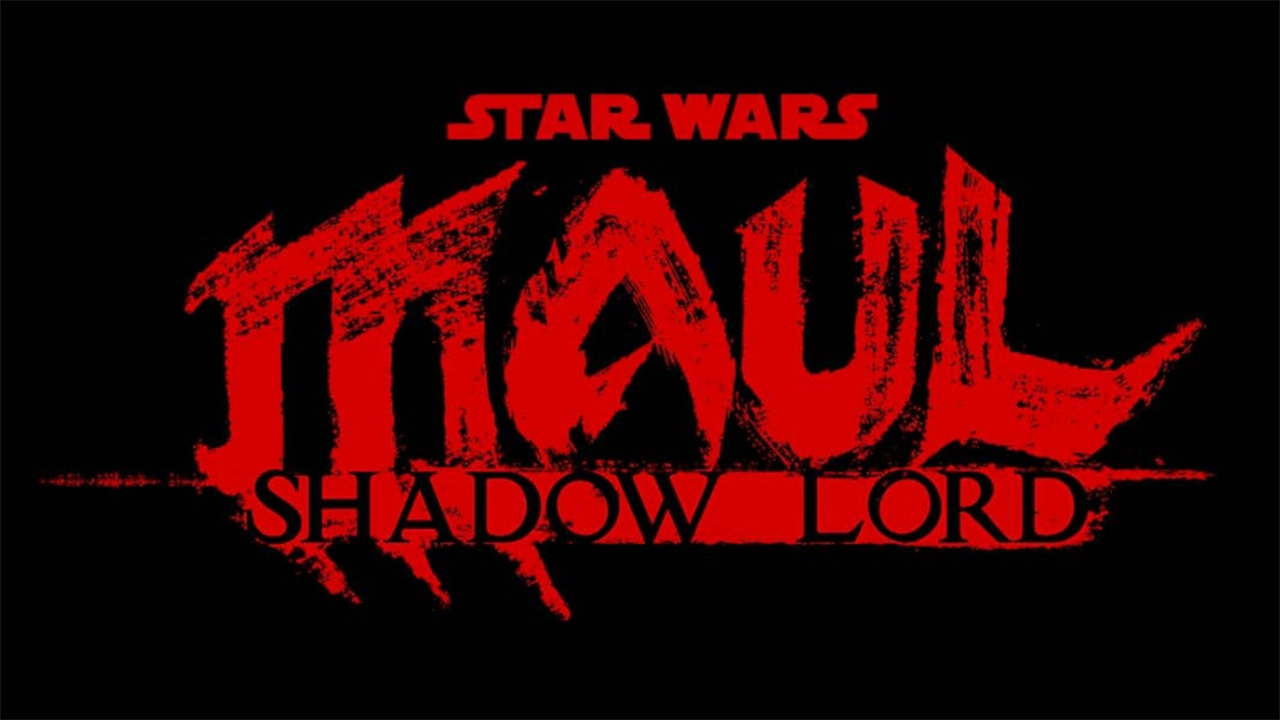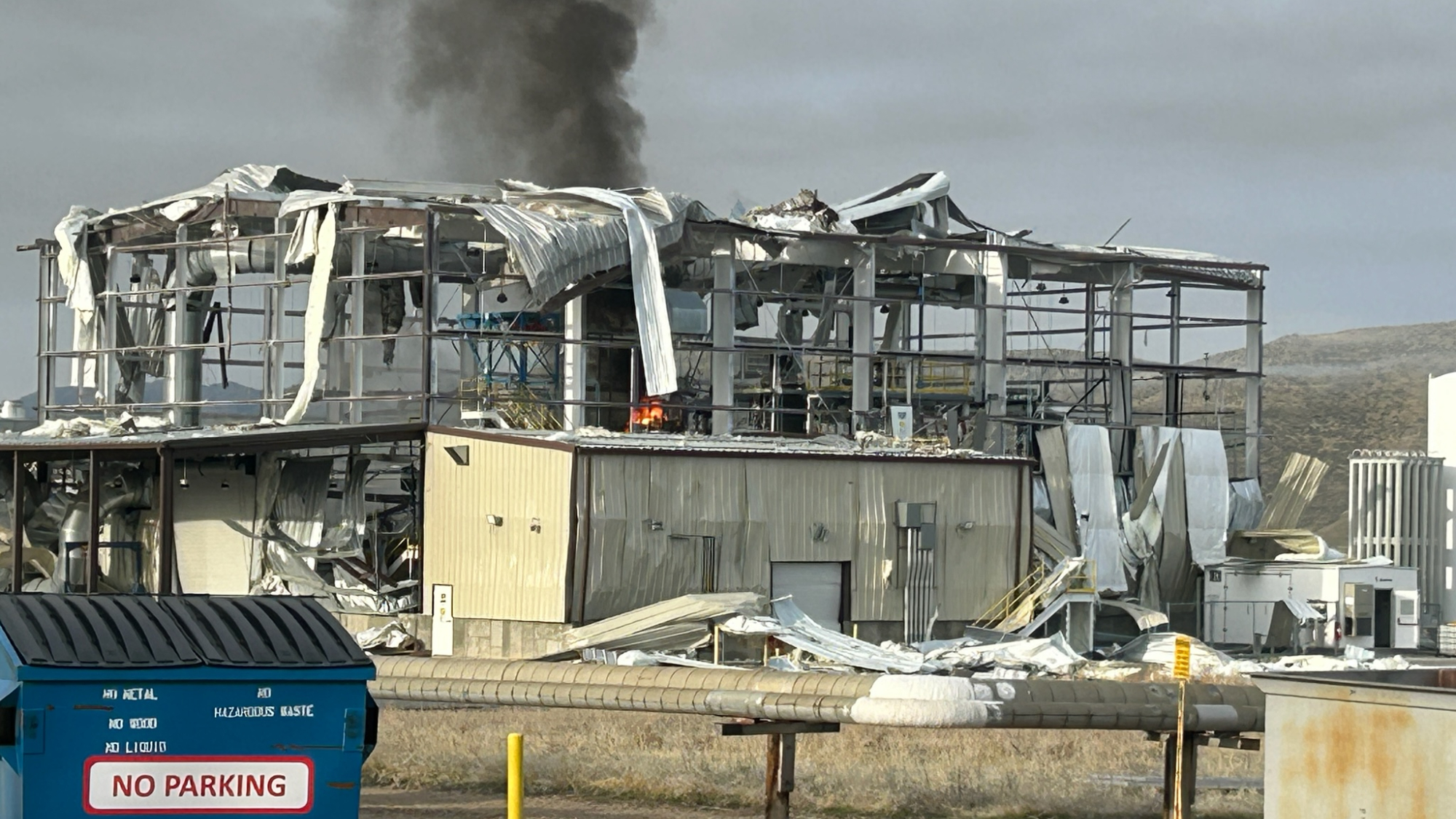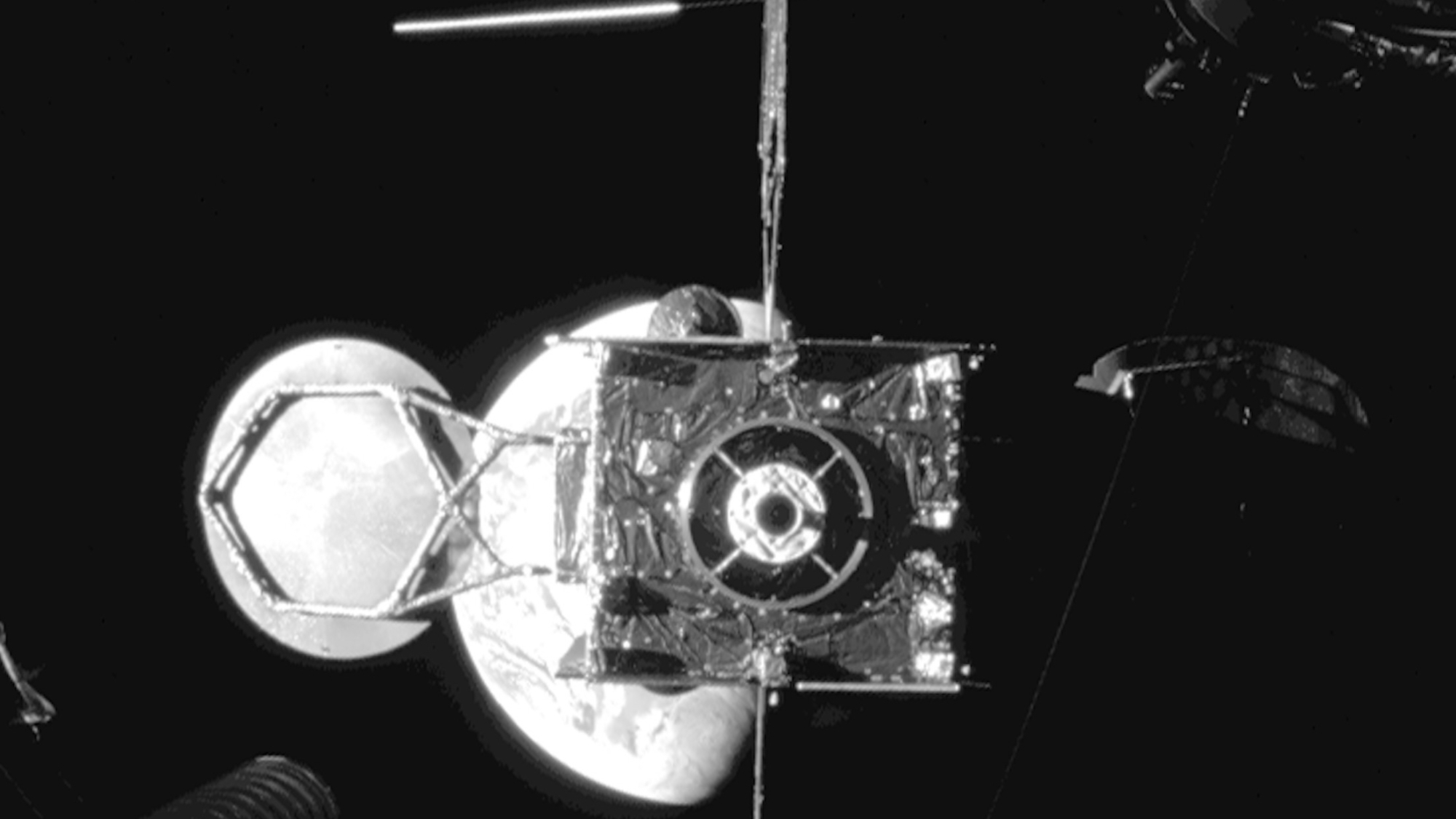Soyuz MS-13 Crew Lifts Off to Space Station on First Moon Landing 50th
Three spaceflyers just took to the skies, 50 years to the day after Apollo 11 touched down on the moon.
Drew Morgan will likely never forget where he was on July 20 — not because it was the day that humans first landed on the moon, but because it was his first launch into space.
The 43-year-old NASA astronaut lifted off with cosmonaut Aleksandr Skvortsov, 53, of Russia's space agency Roscosmos and European Space Agency (ESA) astronaut Luca Parmitano, 42, on Saturday (July 20), 50 years to the day after Apollo 11 astronauts Neil Armstrong and Buzz Aldrin touched down at Tranquility Base.
Morgan and his two experienced crewmates are bound for the International Space Station, where they plan, in part, to contribute to research supporting the return of humans to the moon in the near future.
Related: Apollo 11 at 50: A Complete Guide to the Historic Moon Landing Mission
"It is an enormous honor for us, the crew of Soyuz MS-13, as well as Expedition 60, to commemorate this historic occasion by launching an international crew to the International Space Station. It really is a beautiful symbol of cooperation and progress," Morgan told reporters on Friday (July 19), the day before he, Skvortsov and Parmitano embarked at 12:28 p.m. EDT (1628 GMT or 9:28 p.m. local time) from the Baikonur Cosmodrome in Kazakhstan. "Fifty years to the day Apollo 11 landed on the surface of the moon, it was an accomplishment for all humankind, and we're just proud to be participating in that way."
"It is an amazing coincidence," added Parmitano. "We have to thank orbital mechanics for the fact that we are launching on such a special day. Obviously, we do feel lucky and privileged that we can celebrate this event in such a glorious way."
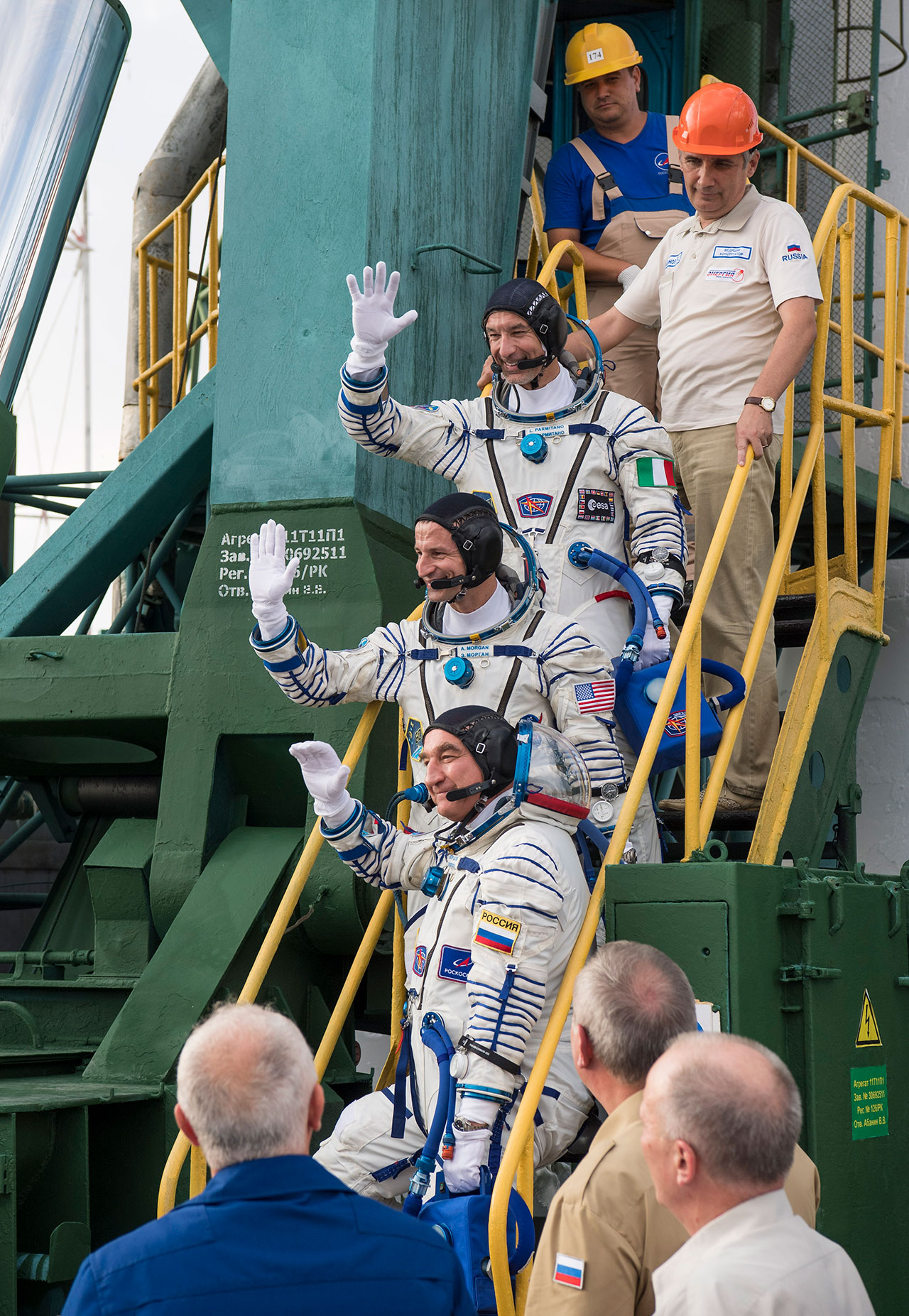
Following a four-orbit rendezvous, the Soyuz MS-13 crew is scheduled to arrive at the space station and dock to its Zvezda service module at 6:51 p.m. EDT (2251 GMT). Once the hatches between the spacecraft are opened, Morgan, Skvortsov and Parmitano will join the Expedition 60 crew of Alexey Ovchinin of Roscosmos and NASA astronauts Christina Koch and Nick Hague, who arrived at the orbiting laboratory in March.
Get the Space.com Newsletter
Breaking space news, the latest updates on rocket launches, skywatching events and more!
"We have already given a small, small tribute to the Apollo 11 mission and it is represented in the [Expedition 60] patch we are all wearing," said Parmitano. "If you give a close look to our patch, you will see that it is a sort of reflection of the Apollo 11 patch. The Apollo 11 patch had an eagle landing on the moon with the Earth in the background. We reversed that; we have a constellation in the shape of an eagle over the Earth symbolizing that we are close to the Earth for our job. And the moon in the background is in the same phase that it was 50 years ago for the moon landing."
The Expedition 60 patch also features three stars in the shape of an 'L', which is the roman numeral for 50.
"One other contribution is we noticed that the Apollo 11 patch didn't have any names because it was thought from the very beginning to be something of such absolute value, that it was an accomplishment for all humanity and the individuals don't matter," Parmitano said. "We chose to do the same thing. Our patch does not have our names or our [countries'] flags because the International Space Station is a cooperation for the whole world."
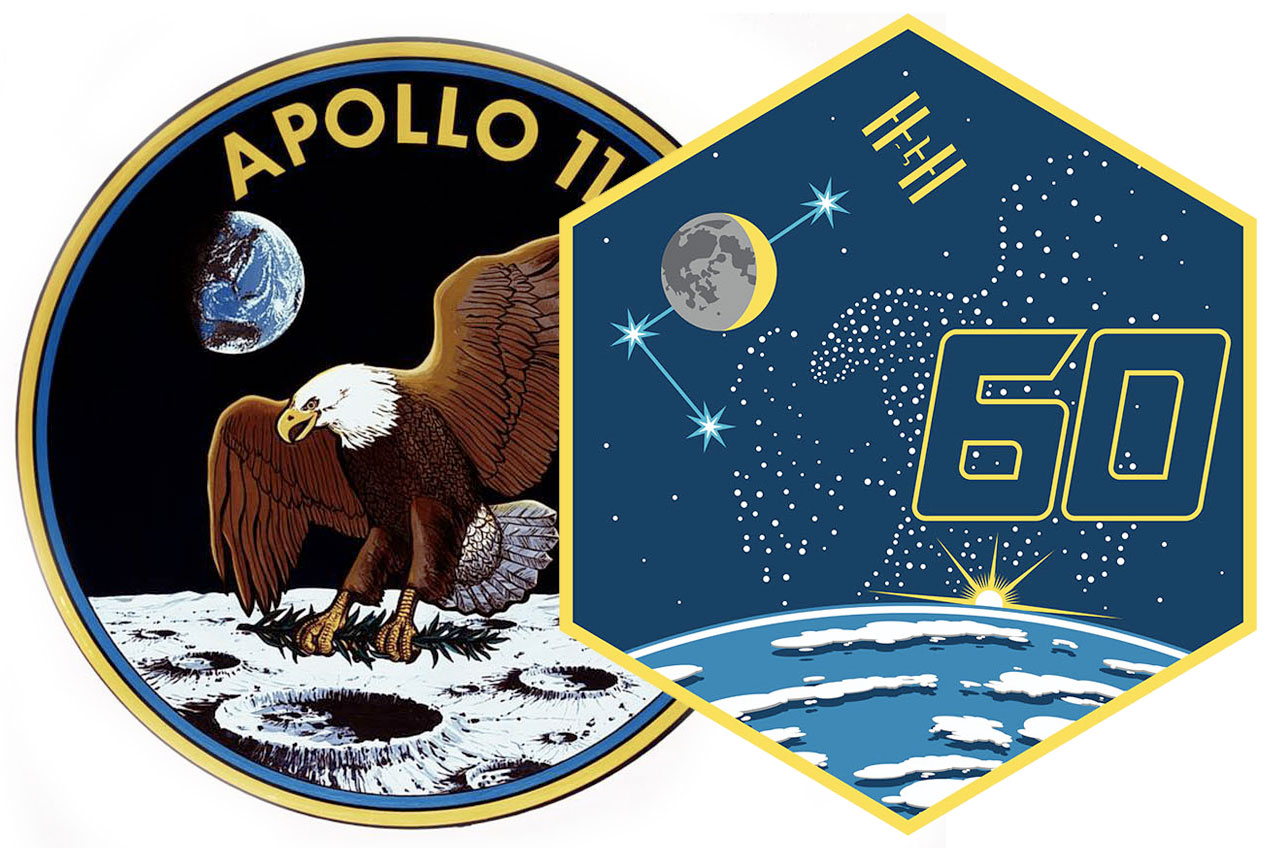
The six-member Expedition 60 crew will be joined by three more people in late September, when Russia's Soyuz MS-15 spacecraft arrives with Oleg Skripochka of Roscosmos, Jessica Meir of NASA and Hazza Al Mansouri, a spaceflight participant and the first astronaut from the United Arab Emirates (UAE). A week later, Al Mansouri will return to Earth with Ovchinin and Hague, as Expedition 61 begins with Parmitano as commander.
During their stay, the Expedition 60/61 crew will continue work on hundreds of experiments in biology, biotechnology, physical science and Earth science aboard the microgravity laboratory. They will also oversee the arrival and departure of several visiting vehicles, including Russian, Japanese and U.S. commercial cargo vehicles, as well as possibly the first uncrewed test of Boeing's CST-100 Starliner crew spacecraft.
It is also possible that Morgan, Skvortsov and Parmitano could see the first arrival of a U.S. commercial crewed spacecraft carrying astronauts, either Starliner or SpaceX's Crew Dragon, though those launches are still pending other tests and development milestones.
A number of spacewalks are also planned for the crew, including a series of extravehicular activities to repair the Alpha Magnetic Spectrometer (AMS) particle physics experiment module.
Related: The International Space Station: Inside and Out (Infographic)
Skvortsov and Parmitano are scheduled to return to Earth in early February on Soyuz MS-13. They will be joined by Koch, who will be completing a record-setting mission with the most days in space on a single flight by a woman.
Morgan is scheduled to remain on the space station and join Expedition 62 until his ride home, Soyuz MS-15, departs in early April with Skripochka and Meir. Koch's and Morgan's extended missions will help gather additional data about the effects of long-duration spaceflight beyond those of the normal six-month station expeditions, supporting future deep space exploration missions to the moon and Mars.
The launch of Soyuz MS-13 marked Skvortsov's third trip to the International Space Station. A second generation cosmonaut (his father, Aleksandr Skvortsov, Sr., served from 1965 through 1968, but retired due to medical issues without having flown in space), Skvortsov has already logged 345 days on expeditions 23/24 in 2010 and 39/40 in 2014.
Parmitano is making his second spaceflight, having previously served on the Expedition 36/37 crew in 2013 for 166 days. His current mission has been given the title "Beyond" by ESA. He will be the first Italian astronaut to command the space station.
Morgan joined NASA with its 21st group of astronauts in 2013. An emergency physician in the U.S. Army, Morgan's own first steps as a new NASA employee in June 2013 was to pay tribute to the late Apollo 11 commander.
"The memorial tree planting for Neil Armstrong was going on and we [Morgan and his wife] attended that. It was the first time I had stepped on Johnson Space Center [property] as a selected astronaut candidate," Morgan told collectSPACE.com.
Soyuz MS-13 is Russia's 59th Soyuz spacecraft to launch toward the International Space Station since 2000 and 142nd to fly since the first Soyuz mission in 1967.
- The Apollo Moon Landings: How They Worked (Infographic)
- Lunar Legacy: 45 Apollo Moon Mission Photos
- How the Apollo 11 Moon Landing Worked (Infographic)
Click through to collectSPACE to see the Soyuz MS-13 crew patch.
Follow collectSPACE.com on Facebook and on Twitter at @collectSPACE. Copyright 2019 collectSPACE.com. All rights reserved.
Join our Space Forums to keep talking space on the latest missions, night sky and more! And if you have a news tip, correction or comment, let us know at: community@space.com.

Robert Pearlman is a space historian, journalist and the founder and editor of collectSPACE.com, a daily news publication and community devoted to space history with a particular focus on how and where space exploration intersects with pop culture. Pearlman is also a contributing writer for Space.com and co-author of "Space Stations: The Art, Science, and Reality of Working in Space” published by Smithsonian Books in 2018.In 2009, he was inducted into the U.S. Space Camp Hall of Fame in Huntsville, Alabama. In 2021, he was honored by the American Astronautical Society with the Ordway Award for Sustained Excellence in Spaceflight History. In 2023, the National Space Club Florida Committee recognized Pearlman with the Kolcum News and Communications Award for excellence in telling the space story along the Space Coast and throughout the world.



